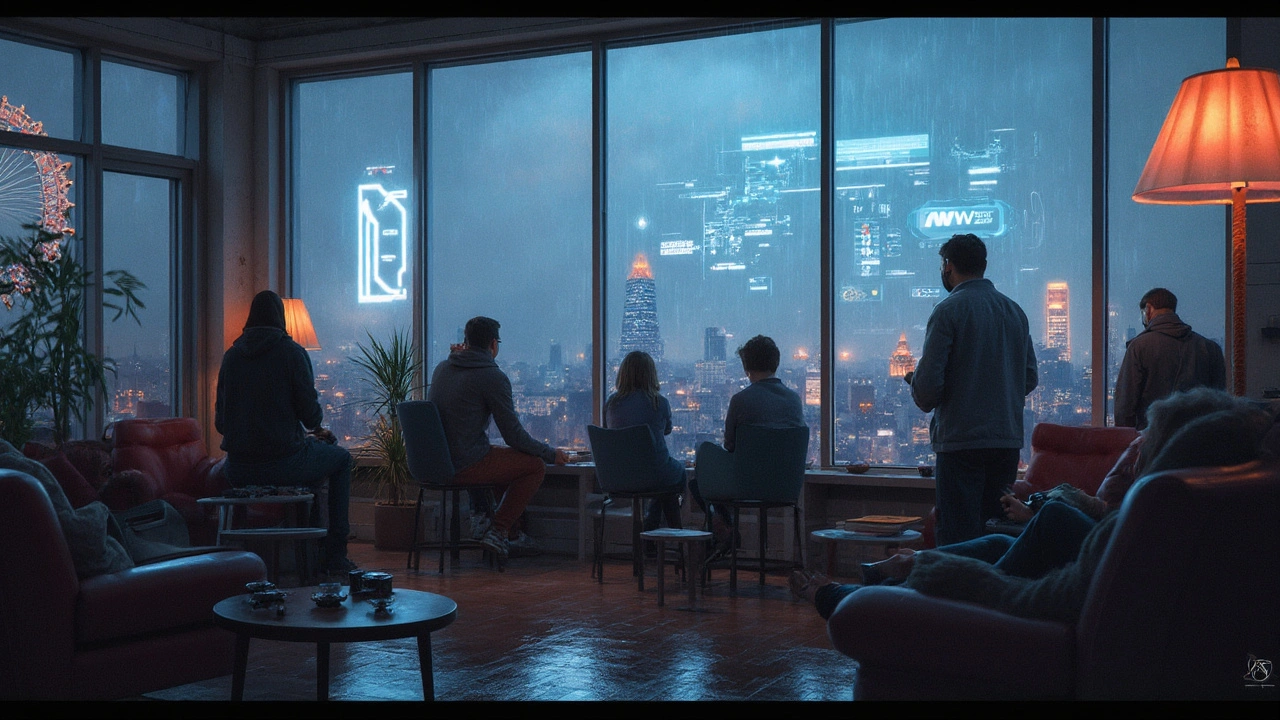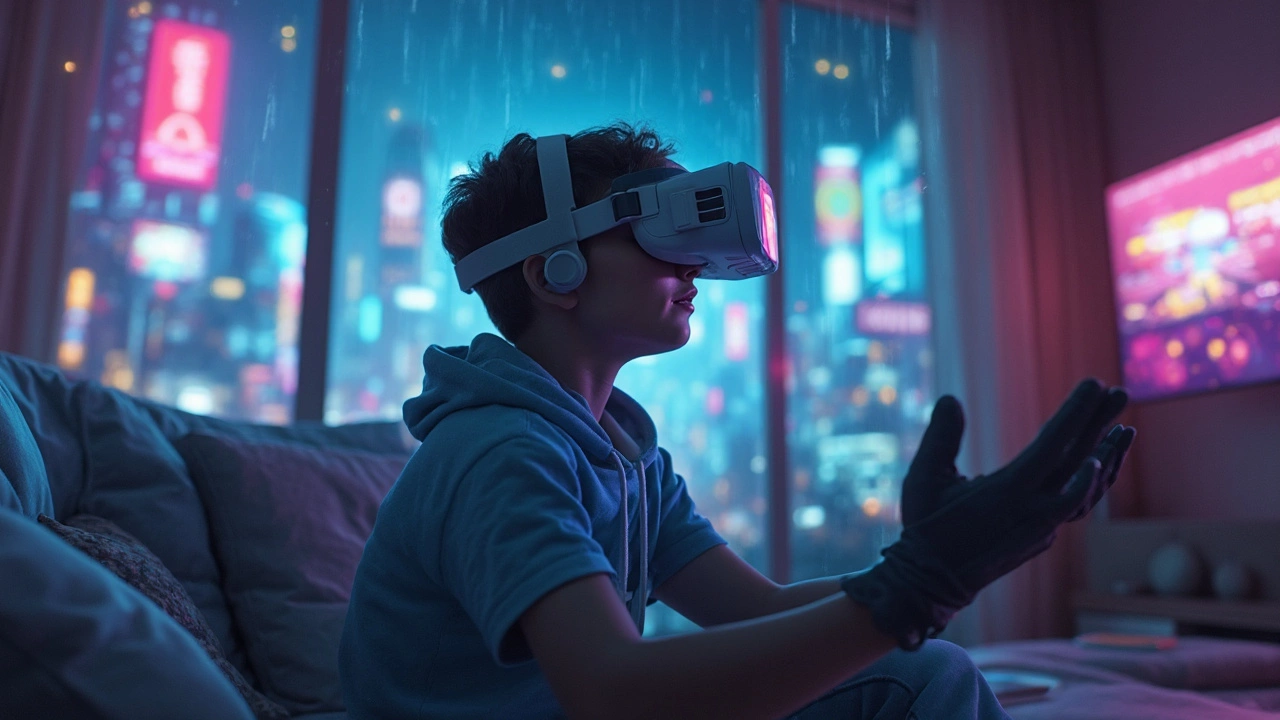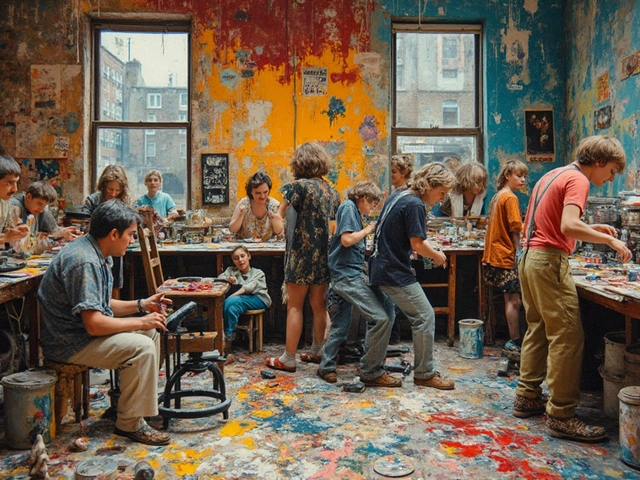Ever wondered if gaming will ever get as good as those sci-fi movies make it look? Remember when just adding a second joystick was considered wild progress? Gaming isn’t just getting bigger. The lines between what’s possible and what’s fantasy are basically smudged out now. Thanks to a mix of technology and pure imagination, it’s not some far-off dream anymore. The future of gaming is getting rewritten every single day—and it’s all happening a lot faster than you’d expect.
Futurism: The Engine Driving Gaming Forward
Futurism isn’t just daydreaming about laser swords and floating cities. In gaming, it means taking a bold look at what might be possible, then ferociously chasing it down. The original arcade Pong is now nearly prehistoric when compared to today’s tech. Game studios—big and small—are throwing themselves into ideas that sounded impossible just five years ago. The real kicker? You don’t have to wait decades; that future’s landing on your sofa every time you boot up a new title.
Look at Nvidia’s RTX graphics cards or AMD’s FSR tech—suddenly, ray-traced reflections and AI upscaling aren’t luxury; they’re normal. Five years ago, this stuff was just bold predictions on Reddit threads. Now it’s expected. And if you think that’s cool, consider this: According to Newzoo, the global games market was worth $184.4 billion in 2024, and cloud gaming is set to almost double by 2027. Tech investments are pouring in like never before.
Indie devs are pushing things too. Games like Cloudpunk and Citizen Sleeper bring cyberpunk futures to life with story-driven tech landscapes. Big studios are learning from them, swapping stiff traditions for experiments with procedurally generated worlds and player-driven stories. Microsoft’s Project xCloud means the game worlds you visit aren’t limited by your own hardware anymore. If you can stream a movie, you can probably now stream Halo with virtually zero lag.
There’s another twist. The philosophy of futurism—constantly asking, ‘What if?’ instead of settling for ‘What now?’—is seeping into every layer. It’s not about predicting flying cars. It’s about using technology, creativity, and massive curiosity to shape a gaming experience you’ll wish you could have dreamed up yourself.
Virtual Worlds: More Real Than Real?
Virtual reality used to mean clunky headsets and awkward motion sickness. Aussie gamers remember when we queued up at events in Sydney just to try out a clunky demo for fifteen minutes. Now, you slip on an Oculus Quest or Sony’s PSVR2 and forget your actual living room even exists. The sensation is wild. More shocking, though? It’s not stopping there. There are games like Half-Life: Alyx and Beat Saber—two experiences that have hit almost mainstream status, blending precision movement and story in ways flat-screen games can’t pull off.
Virtual worlds are hitting a point where you can attend real concerts (remember Travis Scott’s Fortnite show?) or hold board meetings inside game-like environments. The lines are blurry now. School kids in Brisbane use VR to take virtual field trips to Mars, while fitness folks in Melbourne get their sweat on with VR boxing and rhythm games.
A University of South Australia study from 2024 showed VR users remember virtual learning experiences 30% better than standard video training. Imagine what that means when you’re trying to learn how to be a cyberpunk bounty hunter or solve a VR murder mystery. It’s not escapism anymore. It’s personal growth, memory, and skills—just hidden inside a game controller.
Tactile feedback suits? Full-body tracking? Startup companies from Sydney to Silicon Valley are chasing next-gen haptics so you’ll actually feel the rain or the heat of a virtual sunburn. Tech is racing to trick your senses. Even the air you breathe could soon change in a VR world—smell-o-vision science is back from the dead and being retooled for VR by companies like OVR Technology. Doesn’t sound real? Give it six months.

The Rise of AI: Smarter Games, Better Choices
Let’s talk about the real game changers: artificial intelligence. AI is already rewriting the rules in ways you’ll notice and some you’ll never see. Remember when NPCs (non-player characters) just spouted generic lines and got stuck in doorways? Now, generative AI tools let them react almost naturally—maybe they’ll even talk to you about your latest mission fail. Procedural generation, powered by AI, shapes worlds that are never quite the same twice. Futurism in gaming means your enemy could actually outsmart you, and not just because the difficulty slider says so.
Games like No Man’s Sky aren’t built planet by planet; they’re generated with complex algorithms, letting you explore an entire universe no single dev could create by hand. Ubisoft’s Scalar engine aims to make even bigger, seamless virtual spaces. Single-player narratives are shifting, letting players shape their own storylines with emergent dialogue and consequences, so every playthrough can be unique.
AI help isn’t limited to development. Player-facing tools are re-inventing what accessibility means. Voice-activated commands, real-time language translation, and adaptive user interfaces make games playable for a wider audience. Microsoft’s Accessibility Controller was just the first step; now AI-driven systems let players with limited mobility control in-game actions with eye movements or simple gestures. Gamers who’d have been benched a decade ago can now join in.
| Tech | Direct Impact on Gaming |
|---|---|
| Procedural AI | Infinite game worlds, unique for each player. |
| Conversational NPCs | Realistic interactions and personalized stories. |
| AI Accessibility Tools | Better inclusion for gamers with disabilities. |
| Smart Anti-Cheat | Detects and responds to cheaters in real time. |
The pace is wild. According to a 2024 report from the Interactive Games & Entertainment Association (IGEA), 62% of studios in Australia now use machine learning in game design, testing, or user experience. And that number jumps every quarter. AI isn’t coming for our joysticks; it’s making gaming wider, weirder, and way more personal.
Cloud Gaming and Accessibility for All
Cloud gaming is still underrated, but the future depends on it. In 2025, that means if you’ve got a half-decent internet connection in Perth or a smartphone in Brisbane, you can play AAA blockbusters without ever needing to buy a console or graphics card. No more shelling out $900 for a new box every few years.
Microsoft’s Xbox Cloud Gaming and Nvidia’s GeForce Now led the charge. Now, Sony and even smaller players (like Antstream Arcade) have jumped in. These aren’t clunky beta experiments; you get real-time streaming with minimal lag—and the tech just keeps improving. According to a Deloitte 2025 study, in places like Singapore and Australia, up to 28% of gamers play “mostly or only” in the cloud. A few years ago, that was nearly zero.
Game companies are finally embracing accessibility as a core mission, not an optional feature. Cloud tech means games can be scaled on servers with custom access modes, like screen readers for the blind or colorblind settings that actually work. That’s huge. Ever tried to play a mainstream shooter and realized none of the font sizes are adjustable? Cloud platforms can roll out fixes fast—no waiting for a yearly patch or hoping a dev notices your tweet.
Developers are learning from the era of remote work and hybrid teams too. Game dev is international now. Australian studios, for example, are collaborating across time zones using live cloud assets. The next big indie hit might feature Sydney-based art, Japanese soundtracks, and a French storyline—all updated in real time, without anyone ever flying halfway across the world.
Nintendo director Shigeru Miyamoto once said, "What if instead of just observing a story, you could truly live it?" That idea is the whole point of the new era of gaming.

Gaming Culture: The Future Isn’t Just Tech
Here’s something nobody tells you: Futurism in gaming isn’t just about code and tech specs. It’s kind of a mindset. The next decade isn’t only about photorealistic graphics or mind-bogglingly huge maps. The actual community is shifting, too. Esports are filling real stadiums in Sydney and Seoul. School curriculums are folding in ‘games literacy’ as a way to train logic, empathy, and even fitness (yep, digital dodgeball is a thing now).
Streaming platforms like Twitch, YouTube Gaming, and even TikTok are driving the next cultural wave. Video creators now write their own game mods to customize the action. Gamers don’t just play—they create, remix, and connect. Combine that with blockchain tech (which lets you actually own your digital loot or avatars), and your in-game reputation might end up mattering as much as your bank account.
Online safety is now front and centre. Australian eSafety Commissioner research showed in mid-2024 that 42% of teenage gamers had reported toxic behaviour in at least one game per year. Studios are being forced to improve moderation tools and set up smarter reporting systems, some powered by—you guessed it—AI. The aim is to keep the good bits of gaming culture while sending trolls straight to the digital penalty box.
Some things don’t change. Gamers still crave connection, story, challenge, and discovery. But the way we access all that is evolving at dizzy speed. If you want a tip: invest a few minutes into understanding new trends—the next big shift could be just one quirky Kickstarter game or wild TikTok trend away.




